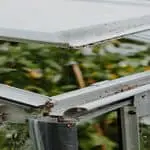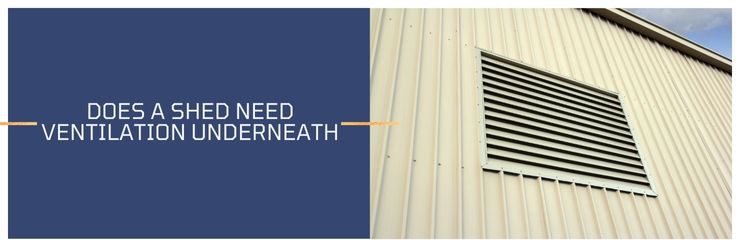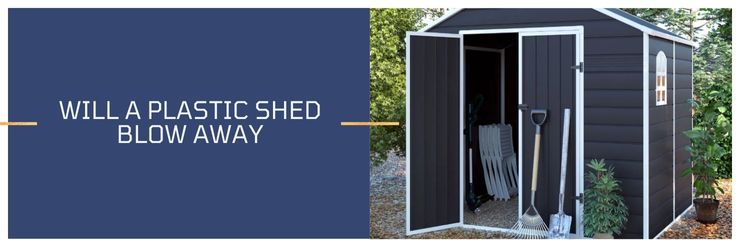Do you need to build a foundation for your shed? This is a question many shed owners ask, and the answer is not always straightforward. So, do all Sheds Need a Foundation?
Not all sheds need a foundation. Smaller sheds can stand on their own without a foundation and be raised on a base above the ground. Larger and heavier sheds will need a foundation. Depending on the shed’s size and contents either gravel or concrete foundations will be best.
In this blog post, we’ll take a look at when you do and don’t need a foundation for your shed, as well as some tips on how to choose the right foundation for your needs. Keep reading to learn to know for sure if your shed needs a foundation or not
- Do all sheds need a foundation?
- What's the problem with putting my shed directly on the ground
- What's the difference between a foundation and a base
- What Are the Different Foundation Types, and What Type is Best
- What Materials Provide the Best Foundation for Your Shed
- When Should You Put a More Solid Foundation on an Existing Shed
- Other Considerations to Review When Building a Shed
- Final Thoughts
Do all sheds need a foundation?
No, all sheds do not need a foundation. Some sheds are designed to be placed directly on the ground, or at least on a base, while others may require a foundation. It really depends on the shed you have or plan to purchase.

- If your shed is smaller than 8×8 and lighter than 300lbs then no foundation will be perfectly ok. Ideally have the shed on a base of some sort.
- If your shed is smaller than 8×8 and heavier than 300lbs then consider a gravel foundation. Having the shed sit on gravel will help with water drainage. You can also consider a base to raise it off the ground, this will also aid air circulation.
- If your shed is bigger than 8×8 and has a floor then consider a gravel foundation. Again, adding a base will offer additional protection.
- If your shed is bigger than 8×8 and doesn’t have a floor then consider a concrete foundation. Using a the concrete will be ideal for a floor. These types of sheds are perfect for heavy objects like cars to be stored inside.
What’s the problem with putting my shed directly on the ground
Regardless of the material of your shed, whether it’s a metal, plastic or wooden shed, placing it directly on the ground is not advisable. Of course, you can level out your yard and simply place the shed on the ground but it will over a not so long time, start to deteriorate.
Depending on the material will determine how long it will last and the type of damage that will be inflicted.
Wet conditions from the ground will rot a wooden shed while metal sheds will rust. Although plastic won’t rust or rot, it will succumb to the environmental changes from the swelling of the ground. This swelling will warp and distort all the sheds.
I did an article about placing a shed directly on grass and talked about it in more detail, I felt it was important to speak to some of the major brands to see what their opinion was, you can see the table of results over on the article. It shows that nearly all brands recommended a foundation or base.
Without one the set will rot and rust, even if it’s been treated for wet conditions. The natural swelling of the ground will cause the shed to warp eventually leading to permanent structural damage where the doors won’t be able to function correctly.
The weight of the shed will slowly sink into the ground until its weight is supported.
All this will start pretty much from day 1, and may not seem evident at first but in only a matter of a few years, you’ll have noticeable visual and structural damage that will shorten your shed’s life.
Raising the shed on a base and having a foundation with a drainage system will give your shed the protection it needs to stay operational for many, many years to come.
What’s the difference between a foundation and a base
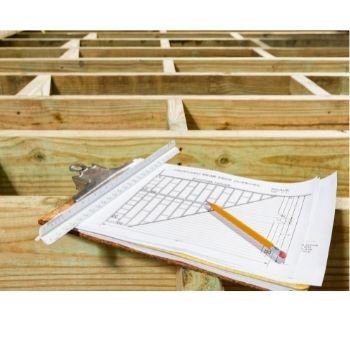
You may be wondering what the difference between a foundation and a base is. You would be forgiven for thinking they are the same thing and the words can be used interchangeably.
Most people do in fact use them interchangeably but there is a distinct difference between the two.
A shed’s foundation is usually made from concrete and depending on the size of your shed will determine how the foundation is made. Shed foundations are usually more permanent structures that are built into the ground.
Small to medium-sized sheds can have a foundation of concrete slab flooring where the shed will be placed on the concrete slabs. The slabs will need to sit on sand and hardcore to allow for adequate drainage.
Larger sheds are best sat on concrete that has been poured into the ground. This is a great foundation for sheds as it won’t move with the swelling of the soil. It’s best to sit the concrete on sand and hardcore to aid in its drainage. These “frost-proof” foundations as they are known, are the best types of foundation but do come with a cost.
A shed base is usually raised off the ground to keep the shed off the wet ground and allow ventilation beneath the shed. Common “on-grade” shed basses as it’s referred to, are treated wooded framed lumber, concrete blocks, or a plastic paver system.
Some sheds are already pre-built with a base and therefore you won’t need to build one. Having your shed sit on a base makes the shed much more portable if you ever wished to move it.
A shed base is suitable for small to medium-sized sheds but not for larger sheds. As you can imagine, a shed base is a much more affordable option compared with a shed foundation making it ideal for a lot of sheds.
Related article:
What Are the Different Foundation Types, and What Type is Best
There are a couple of different ways to build a solid foundation for your shed, but what are they? And what type is best? Find out more in our gallery of foundation options below:
| On-Grade Foundation | Best for Small to Medium-Sized Sheds |
| Concrete Blocks | Common Option for Small Sheds, Place on Each Corner and In the Middle Depending on Size, Low-Budget Option |
| Deck Blocks | Stronger than Regular Concrete Options, Mid-Range Budget Option, Better for Medium-Sized Sheds, Place on Each Corner and Middle Depending on Size |
| Frost-Proof Foundations | Best for Large or Industrial Sized Sheds |
| Concrete Slab | Strong and Solid Foundation That Can Withstand All Weather Elements, Resists Structural Damage, Provides Permanent Structure, Lays Flat Throughout |
| Foundation Wall with Footing | Provides Lift, Structurally Sound, Support Piers Prevent Structural Damage from Frost Among Other Harsh Weather Elements, Best for Large or Industrial Size Sheds |
As you can see, there are many foundation options that are available to you, and choosing the right foundation for your shed will depend on location and size. The more expensive your foundation plan is, the more likely you will need to fill out lengthy paperwork for the proper permits for your shed, so make sure to get a solid structure that works for your shed’s size. Each of these shed options will help your shed battle decay from mold, rot, and other harsh weather conditions and increase the overall longevity of your shed’s life.
If you are still concerned about what foundation you should get for your shed size, consider consulting with a foundation expert in your area, as they will know the permits and requirements needed to provide a structurally sound foundation on your shed.
What Materials Provide the Best Foundation for Your Shed
For small to medium-sized sheds, a gravel foundation would be best suited. Gravel foundations are great for drainage. For larger heavier sheds, particularly ones without a premade floor, then concrete would be better suited.
A gravel foundation is great for a small to medium shed about 8×8 or smaller because it allows for drainage.
Rainwater can run off and not pool around the shed, which could lead to rot or other water damage. Gravel allows the water to seep down into the ground rather than sit on top of the ground.
A concrete foundation is good for large or heavy sheds, or ones without a premade floor. This is because it will support the weight of the shed and contents better.
Concrete can hold heavier weights but doesn’t offer the same benefits with regard to drainage. Placing a shed on a concrete foundation with a premade floor may succumb to moisture damage as the water pooling under the shed’s floor cant be drained as easily.
Much smaller and lighter sheds might not require a foundation but it would still be advisable to have it placed on a base. Doing so will help prevent a number of issues such as moisture damage and structural damage.
When Should You Put a More Solid Foundation on an Existing Shed
Perhaps you have an existing shed that is starting to show signs of wear and tear because of an improper foundation. Every shed owner should be well-educated on the signs that may say it is time to invest in a stronger foundation. Explore some of the warning signs you must take heed of when determining the strength of your shed’s foundation below:
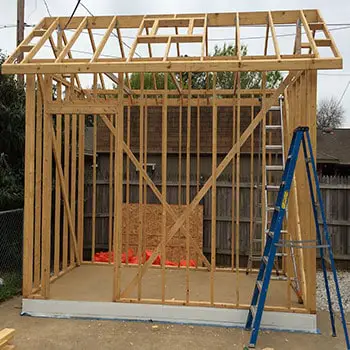
- Rotting Floors – Older sheds with untreated wood floors will be subject to rot, and if your shed does not have a stone or metal foundation, you may see your wood start to deteriorate. If your wood floor structure becomes soggy and starts deteriorating under moist conditions, you may want to consider investing in a different foundation material that does not rot.
- Structural Issues –Vines from neighboring trees and tectonic shifting may cause your shed’s floor to break apart, leaving your personal belongings exposed to unwanted critters and harsh weather elements. If you are experiencing rotting or structural issues, it may be time to look into obtaining a stronger foundation.
- Sinking – Many people build small sheds on a gravel foundation, but if your shed starts sinking, you may want to consider moving to a more permanent foundation material. Sinkholes are common in the united states, especially states lower in sea level. Once your shed starts sinking, it may be harder to access, and your shed’s floor may deteriorate exponentially, potentially causing harm to your personal belongings.
The sooner you can spot some of these common structural issues, the faster you will be able to incorporate a foundation onto your shed that can withstand harsher conditions and last a lifetime. Moisture and time are powerful ingredients when reacting to wood, and if you do not have a proper foundation on your shed, you are putting your shed on a time limit. Invest in a stronger foundation, and you will be satisfied with the longevity of your shed and the strength of its foundation.
Other Considerations to Review When Building a Shed
When you are deciding to build a shed’s foundation, you may have to look at a variety of conditions and stipulations that may limit your design ideas and workstation customization. Below, we discuss certain considerations to consider when building a shed for your backyard:
- Choose a Stellar Location – Before settling on a shed design, you may want to verify the zoning laws in your area. Certain zoning laws may restrict you from building a shed in a certain area in your yard, building a certain size shed, and it may limit the type of materials you can use. You will also want to avoid sinkholes, unlevel ground, and areas with a lot of trees, as this can cause structural damage to your shed over time.
- Consider Water and Electricity – If you are planning to work in this shed, or inhabit this shed as a performance or entertainment area, you may want to consider building a shed that will have access to electricity and water. If you are planning to have a restroom or sink in your working area, you will have to have a plan to ensure that the right plumbing is involved in the making of your shed.
- Adjust the Layout in Your Yard – You generally want your shed’s foundation to be clear of interference, easy to access, and have no trees or roots nearby. Most backyards already have a plethora of space being used up by a pool, a fireplace, a swing set, or any other imaginable backyard accessory. Rearrange your backyard setting to get the most out of your shed’s space and design.
Final Thoughts
We looked into the question; Do all sheds need a foundation? we looked at what shed require what type of foundation.
It does not really matter what the size of the shed is, you will be able to provide a foundation for it that lasts a lifetime if you choose the right foundation for your space. Find the right foundation strategy for your shed and build your shed right!


